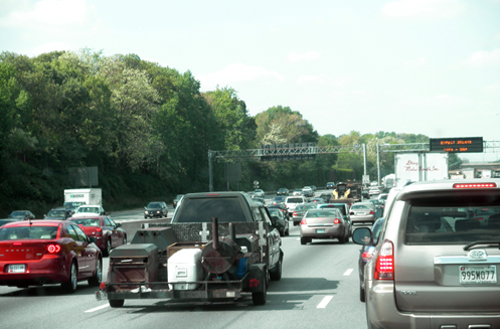The Fisheries Habitat and Ecosystem Program (FHEP) is working to understand how habitat changes impact Maryland's fisheries in the Chesapeake Bay. Our focus has been primarily on understanding how urbanization limits habitat for fish.


Studies by the Fisheries Habitat and Ecosystem Program have found strong links between increased development and declining fish habitat quality in tidal tributaries of Chesapeake Bay. These links have led to creation of thresholds and targets for development to consider when managing fisheries and planning for development. These thresholds and targets use impervious cover (hard surfaces such as pavement and rooftops that are impenetrable to runoff of rain and snow melt) as a measure of development. Impervious surface thresholds describe tipping points where habitat becomes poor for fish and shellfish. These targets and thresholds are being communicated to planners and the public through a simple message, "land conservation is fish conservation!" as a reminder that forests, wetlands, other natural areas, and working farms are keys to productive Chesapeake Bay fisheries.
FHEP Goals and Objectives
Our goal is to develop ecosystem-based fishery management strategies that will sustain fish communities in the future. In order to do this, we are working to identify fishery and ecosystem interactions with land use and water quality stressors.
Fisheries managers do not have authority to manage land-use so they have to consider managing fish differently at different levels of development. The target level of development for fisheries is indicated by about 5% impervious surface or less. Land-use at this level does not undermine effectiveness of harvest controls for sustaining fish populations. Once above this level of development, increasing consideration has to be given to habitat preservation and revitalization. Lowering harvest levels may be able to offset habitat degradation.
The threshold of development of 10% impervious surface represents a suburban landscape where serious aquatic habitat degradation becomes apparent.
When a watershed reaches 15% impervious cover, the likelihood of recovery is marginal. Presently, there is no scientific evidence that re-engineering can fully restore these functions to promote sustainable fisheries, leaving fisheries managers few options for managing populations. Harvest restrictions become increasingly ineffective in stemming fishery declines when fisheries are substantially less productive.